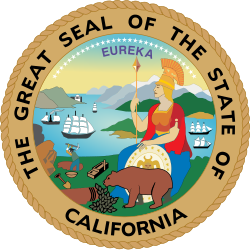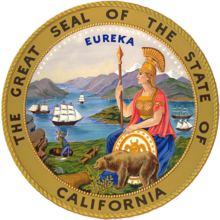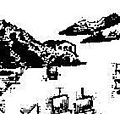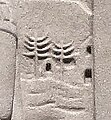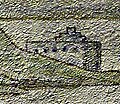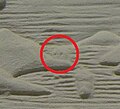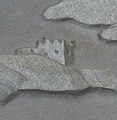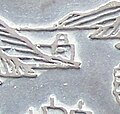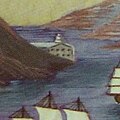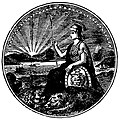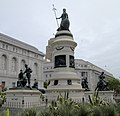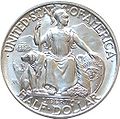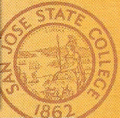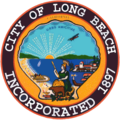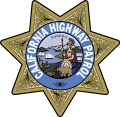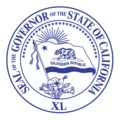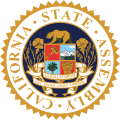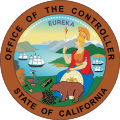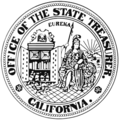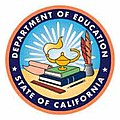
The Bear Flag is the official flag of the U.S. state of California. The precursor of the flag was first flown during the 1846 Bear Flag Revolt and was also known as the Bear Flag. A predecessor, called the Lone Star Flag, was used in an 1836 independence movement; the red star element from that flag appears in the Bear Flag of today.
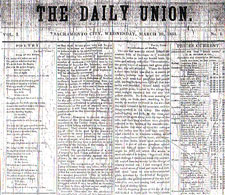
The Sacramento Union was a daily newspaper founded in 1851 in Sacramento, California. It was the oldest daily newspaper west of the Mississippi River before it closed its doors after 143 years in January 1994, no longer able to compete with The Sacramento Bee, which was founded in 1857, just six years after the Union.

Amtrak California is a brand name used by the California Department of Transportation (Caltrans) Division of Rail for three state-supported Amtrak regional rail routes in California – the Capitol Corridor, the Pacific Surfliner, and the San Joaquins – and their associated connecting network of Amtrak Thruway transportation services.
California's major urban areas normally are thought of as two large megalopolises: one in Northern California and one in Southern California, separated from each other by approximately 382 miles or 615 km, with sparsely inhabited (relatively) Central Coast, Central Valley, and Transverse Ranges in between. Other ideas conceive of a single megalopolis encompassing both North and South, or a division of Coastal California vs. Inland California. These regional concepts are usually based on geographic, cultural, political, and environmental differences, rather than transportation and infrastructure connectivity and boundaries.

The California State Capitol is the seat of the California state government, located in Sacramento, the state capital of California. The building houses the chambers of the California State Legislature, made up of the Assembly and the Senate, along with the office of the governor of California. The Neoclassical structure, designed by Reuben S. Clark, was completed between 1861 and 1874. Located at the west end of Capitol Park and the east end of the Capitol Mall, the building was added to the National Register of Historic Places in 1973. The California State Capitol Museum is housed on the grounds of the capitol.

Matt Ignatius Sullivan was the 16th Chief Justice of California. Appointed by Governor Hiram Johnson, Sullivan served from August 22, 1914, to January 4, 1915.

California's transportation system is complex and dynamic. Although known for its car culture and extensive network of freeways and roads, the state also has a vast array of rail, sea, and air transport. Several subway, light rail, and commuter rail networks are found in many of the state's largest population centers. In addition, with the state's location on the West Coast of the United States, several important ports in California handle freight shipments from the Pacific Rim and beyond. A number of airports are also spread out across the state, ranging from small general aviation airports to large international hubs like Los Angeles International Airport and San Francisco International Airport.

The history of newspapers in California dates back to 1846, with the first publication of The Californian in Monterey. Since then California has been served by a large number of newspapers based in many cities.
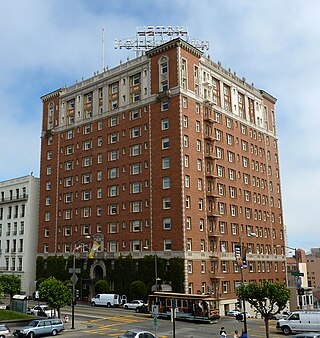
Weeks and Day was an American architectural firm founded in 1916 by architect Charles Peter Weeks (1870–1928) and engineer William Peyton Day (1886–1966).

The following outline is provided as an overview of and topical guide to the U.S. state of California.

Tani Gorre Cantil-Sakauye is an American lawyer and jurist who was the 28th Chief Justice of California and is the president/CEO of the Public Policy Institute of California. She was nominated by Governor Arnold Schwarzenegger to serve as chief justice on July 22, 2010, and retained in office by California voters on November 2, 2010, she was sworn in on January 3, 2011 as California's first Filipino and first woman of color to serve as California's Chief Justice. Prior to her appointment as chief justice, Cantil-Sakauye had served in judicial offices on California's appellate and trial courts. On July 27, 2022, she announced she would retire and not run for another 12 year term on the court in November and step down on January 1, 2023, leaving Governor Newsom to appoint her replacement. On September 28, 2022, the Public Policy Institute of California announced that Cantil-Sakauye would become its president and chief executive officer, effective January 1, 2023. On September 21, 2023, the Judicial Council of California voted unanimously to name the new Sacramento County courthouse after former Chief Justice Tani Cantil-Sakauye.
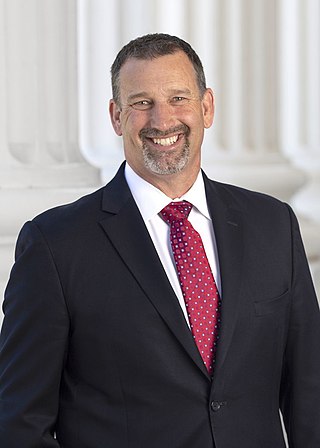
Brian Dwain Dahle is an American politician and farmer who has served as a member of the California State Senate from the 1st district since 2019. A member of the Republican Party, Dahle served as a member of the California State Assembly from the 1st district from 2012 to 2019, and as Assembly minority leader from 2017 to 2018. Before his election to the state legislature, Dahle served on the Lassen County Board of Supervisors from 1997 to 2012.
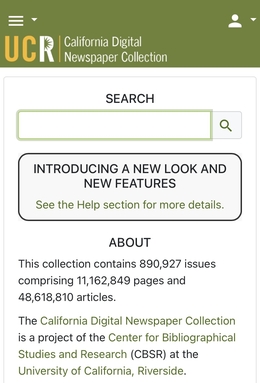
The California Digital Newspaper Collection (CDNC) is a freely-available, archive of digitized California newspapers; it is accessible through the project's website. The collection contains over six million pages from over forty-two million articles. The project is part of the Center for Bibliographical Studies and Research (CBSR) at the University of California Riverside.
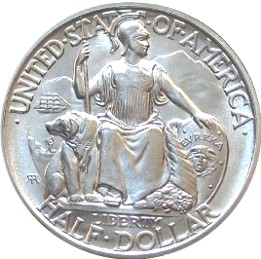
The California Pacific International Exposition half dollar, sometimes called the California Pacific half dollar or the San Diego half dollar, is a commemorative fifty-cent piece struck by the United States Bureau of the Mint in 1935 and 1936. Robert Ingersoll Aitken designed the coin. Its obverse depicts Minerva and other elements of the Seal of California; the reverse shows buildings from the California Pacific International Exposition, which the coin was issued to honor.
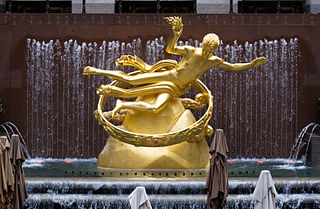
The Art Deco style, which originated in France just before World War I, had an important impact on architecture and design in the United States in the 1920s and 1930s. The most notable examples are the skyscrapers of New York City, including the Empire State Building, Chrysler Building, and Rockefeller Center. It combined modern aesthetics, fine craftsmanship, and expensive materials, and became the symbol of luxury and modernity. While rarely used in residences, it was frequently used for office buildings, government buildings, train stations, movie theaters, diners and department stores. It also was frequently used in furniture, and in the design of automobiles, ocean liners, and everyday objects such as toasters and radio sets.

Proposition 57 was an initiated California ballot proposition, approved on the November 8, 2016 ballot. The Proposition allows parole consideration for nonviolent felons, changes policies on juvenile prosecution, and authorizes sentence credits for rehabilitation, good behavior, and education.
The Sacramento Valley Development Association was a quasi-public entity of colony land developers founded in 1900 to advance the area's political and commercial interests as well as market its agricultural products. The organization, headquartered in Sacramento, was founded by 6 counties but came to comprise representatives from 6 more, each selected by their respective county supervisor. It remained operational and influential until 1925 when the Sacramento Valley Regional Advisory for the larger California Development Association filled the void.

The 2018 California Superintendent of Public Instruction primary election was held on June 5, 2018, to elect the Superintendent of Public Instruction of California. Unlike most other elections in California, the superintendent is not elected under the state's "top-two primary". Instead, the officially nonpartisan position is elected via a general election, with a runoff held on November 6, 2018, because no candidate received a majority of the vote.

The 2022 California State Controller election was held on November 8, 2022, to elect the California State Controller. Due to strict absolute lifetime term limit laws, incumbent Democratic State Controller Betty Yee was ineligible to run for a third term. Democrat Malia Cohen won the election, defeating Republican Lanhee Chen. Despite Chen's loss, the race was the closest of the 2022 elections in California and Chen received more votes than any Republican candidate in the 2022 national election cycle. Chen flipped ten counties, also the most any candidate flipped in California.
